Y-12 Blog
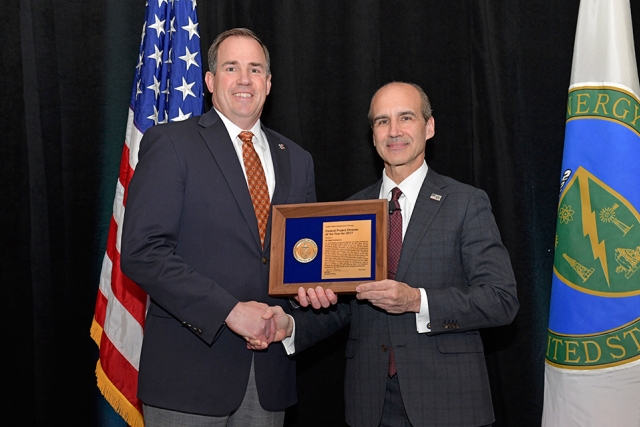 Dale Christenson (left) receives the Federal Project Director of the year award from Under Secretary of Energy Mark Menezes.
Dale Christenson (left) receives the Federal Project Director of the year award from Under Secretary of Energy Mark Menezes.
Dale Christenson, project director of the Uranium Processing Facility, was presented the U.S. Department of Energy’s Federal Project Director of the Year Award on March 14. Christenson leads the NNSA’s $6.5 billion UPF project underway at
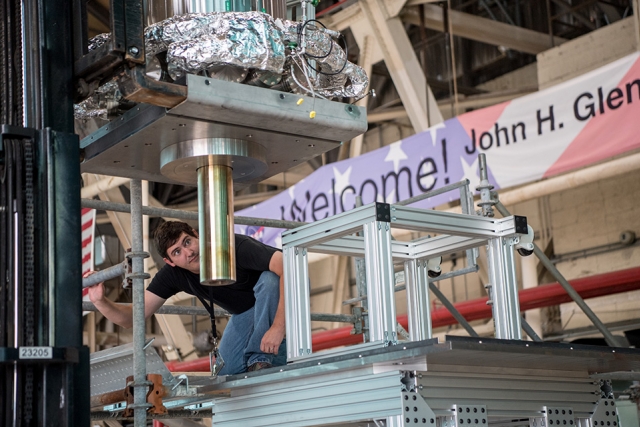 Photo courtesy of NASA.
Photo courtesy of NASA.
Last month was important for the
“Y-12 and other NNSA sites are on the front edges of the advanced reactor effort for boutique reactors for NASA and other possible users such as the Department of Defense,” Senior Technical Consultant for Program Development Chris Robinson said. “The final test lasted 28 hours and is a significant milestone for the NASA’s fission surface power program.
“Support for NASA continues to progress the technology for future testing and need for reliable fission-based power systems. In addition, our accomplishments gave the U.S. Army the confidence to initiate a multi-year project to upgrade the fuel for the White Sands Missile Range Fast Burst Reactor,” Robinson said.
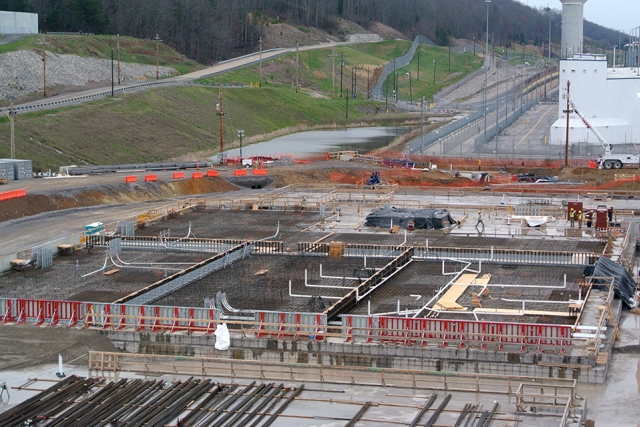 Construction is underway on the Mechanical Electrical Building at the Uranium Processing Facility site.
Construction is underway on the Mechanical Electrical Building at the Uranium Processing Facility site.
Last month, the UPF project received authorization from DOE/NNSA leadership to start construction on the Main Process Building and Salvage & Accountability Building subprojects. UPF will replace World-War-II-era facilities with a modern, more efficient, and safer facility for conducting highly enriched uranium operations at
“This milestone is another important step toward delivering UPF and strengthening our nation’s nuclear security,” said Lisa E. Gordon-Hagerty, DOE Under Secretary for Nuclear Security and NNSA Administrator. “I’m proud of the UPF team for keeping an acquisition project of this size and scope on budget and on schedule.”
See the complete NNSA press release for more information.
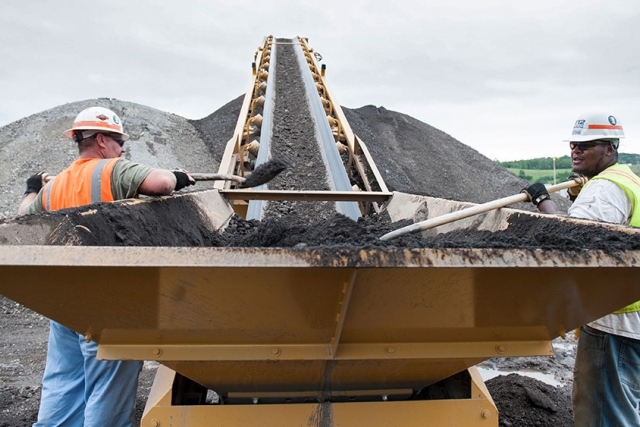
In less than five years, the Uranium Processing Facility (UPF) Project has recycled or reused nearly 194 million pounds of materials and diverted more than 97 percent of the project’s total waste from landfills.
“Our recycling and reuse effort is the result of careful planning prior to the beginning of construction,” said UPF Project Director John Howanitz.
In the early stages of planning, UPF’s Construction and Environment, Safety & Health (ES&H) personnel teamed up to determine what types of waste would be generated during site preparation and how it could be converted to beneficial use.
Asphalt removed from parking lots and other areas of Y-12 was recycled and used onsite, and vegetation debris from clearing land became a barrier to prevent silt from entering streams and waterways.
From May 2013 through December 2017, UPF recycled or reused 64 million pounds of asphalt, 1.2 million pounds of mixed scrap metal, and more than 13 million pounds of wood.
UPF’s efforts resulted in an Environment and Energy Award from the Tennessee Chamber of Commerce and Industry and an Environmental Stewardship Award from the National Nuclear Security Administration.
“The UPF team is committed to environmental sustainability, and we will continue to identify opportunities to recycle or reuse materials and divert material from landfills as construction progresses,” Howanitz said.
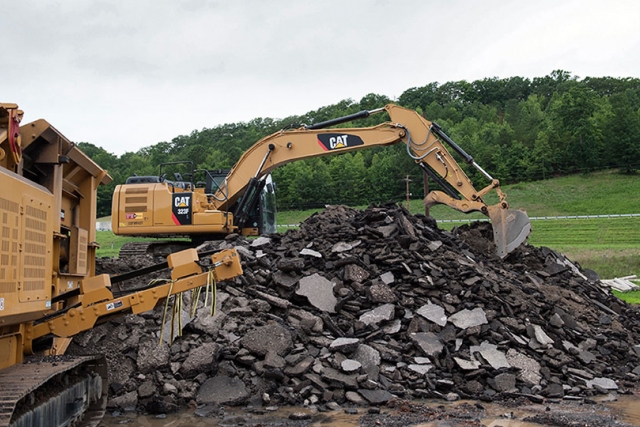
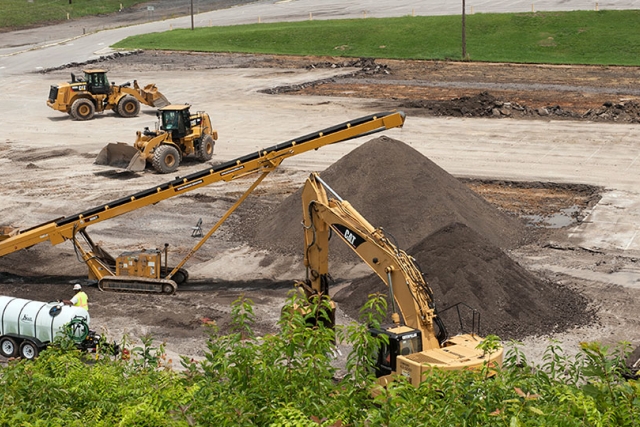
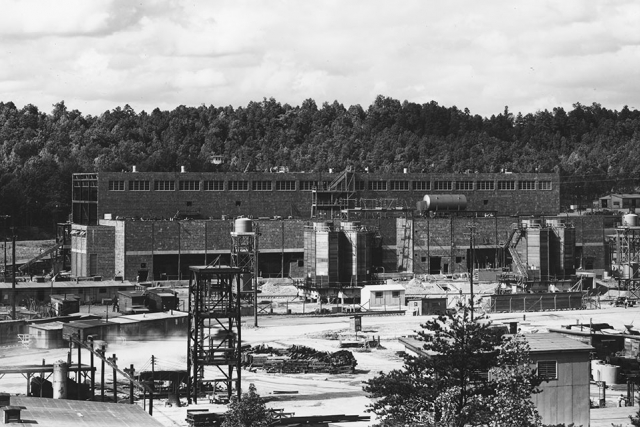 Building 9204-4 (Beta-4) under construction in August of 1943.
Building 9204-4 (Beta-4) under construction in August of 1943.
Y-12 made history by opening and operating Building 9204-4 (Beta-4) in 1945 to house the workhorse Calutrons that separated uranium for the first atomic bomb. The building later was recycled to house Cold-War processes, including the production of lithium-6. Almost 75 years later, it is stepping through the complex process to prepare the 400,000 square-foot facility for eventual demolition.
Jack Bolinger is leading a diverse team to complete three phases of the Legacy Material Removal project in the building, and phase one just wrapped up. “The focus was to remove any equipment that wasn’t hardwired in or bolted down,” he said. The project was awarded in June 2017 and completed in February 2018. “The total amount of material shipped to the Environmental Management Waste Management Facility was approximately 2.71 million pounds and 932 cubic yards of equipment (that’s equal to 30 average-sized airplanes).”
This effort significantly lowers the risk in the building by removing the majority of combustible material and reducing the number of radiologically and beryllium-posted areas. A large portion of the building was down-posted from a high- to a fixed-contamination area, which means personnel are no longer required to dress out in personal protective equipment for these areas. Lifting this requirement will facilitate current surveillance and maintenance activities as well as future demolition and disposal activities.
“This huge undertaking would not have been possible for any single organization at Y-12 to handle on its own,” said Bolinger. He credits the multi-organizational team and their subcontractor, Gem Technologies, as instrumental in their success.
As one of the behemoth Calutron buildings, the sprawling three-story Beta-4 facility could house seven football fields. It was closed in 2003, still holding an array of leftover equipment, tools and remnants that tell its story of WWII, Cold War and post-war missions.
Y-12 is scheduled to turn Beta-4 over to Environmental Management by the end of 2020 for demolition, which will facilitate environmental cleanup, reduce the Y-12 footprint and minimize risk to the public.
